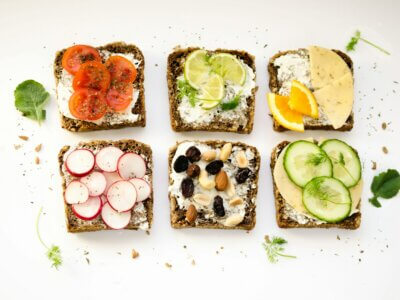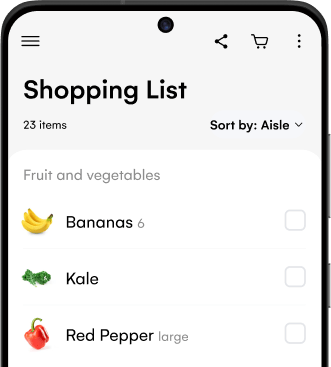Estimated reading time: 5 minutes
If you’ve been trying to manage your weight for any length of time, you’ve probably come across some common terms and lingo. One of the terms you must have heard is a calorie deficit. Sometimes, it can be hard to tell the difference between ‘buzzwords’ and fads, and concepts which are actually grounded in science and evidence. But calorie deficits are a proven way to lose weight.
Plan meals together! Share this plan with your family

Calories are the measuring units for the energy found in food. Since weight loss involves energy consumption, expenditure and storage, it’s a good idea to understand what this means at the basic level.
Here’s more about calories, as well as how to create a suitable calorie deficit for weight loss.

What’s a calorie?
A calorie is simply a unit of energy. Every food type you eat contains energy, and that energy is measured in calories. The amount of calories in a meal determine how much work it will take for you to burn the energy it contains.
Carbohydrates and proteins contain about the same amount of calories per gram. One gram of each contains 4 calories. Fat and oils contain more than double of that, with a gram contains 9 calories.
What’s a calorie deficit, and why does it matter?
A calorie deficit is the difference between the amount of calories you consume and the amount you burn or use.
If you eat fewer calories than you use each day, you have a calorie deficit. When this happens consistently over time, you’ll begin to lose weight. If you eat more than you require or you ‘break even’, your weight will go up or stay the same.
Your body only burns existing stores of fat (and sometimes muscle) when you aren’t getting enough calories through diet. Burning calories takes lots of work. That’s why losing weight through exercise alone is very difficult, and doesn’t usually work. As the saying goes, ‘you can’t outrun a bad diet.’
How do you create a calorie deficit?
Creating a calorie deficit begins with knowing how many calories you use each day, and then consuming less than that. In other words, eating less than you need creates a calorie deficit.
Generally, the amount of energy you use each day depends on several factors including on your weight, sex, age, body type, and metabolic rate. People who weigh more use more energy than others. And men use more energy than women. And younger people use more energy than older ones.
There are two types of energy you use each day. The first is energy for your body’s processes such as your breathing, heart beat, digestion, and brain function. The second is energy for physical tasks like walking, standing, and moving your hands. Together, both types make up your daily energy needs.
Get inspired and connect with other home cooks like you

You can use an online tool like this to estimate your daily calorie needs. Once you get a number, all you need to do is eat less than that every day.
Experts advise that you aim for a calorie deficit of about 500 calories a day or less to ensure your calorie deficit is sustainable and won’t be harmful to your health.
Tips for success
To maintain a calorie deficit safely and sustainably, here are some tips for success.
- Learn the calories foods you eat regularly. Samsung Food app can help you do this with detailed nutritional breakdown for recipes and ingredients, as well as an easy-to-read health score.
- Drink lots of water: Experts advise women to drink about nine cups a day and men to drink about thirteen cups. But you may need less if you are younger, have a smaller body size, or live in a cold area. Or more if you have a larger body, live/work in a hot area, or are losing body fluid due to a health condition. It sounds strange, but consuming more water can help you fight water weight too.
- Eat lots of low calorie, high fiber foods: A successful diet often depends on how well it keeps hunger at bay. Filling up with foods high in fiber but low in calories such as vegetables can help you feel full and satiated.
- Keep a food journal. A journal can help you keep track of what you eat over time. You can use this to track how well you are following your plans to maintain a calorie deficit. Similarly, you might want to use a meal planning app Samsung Food so you can see your day, week, or month’s meals and nutrition at a glance. It makes it far less likely that you’ll reach for takeout or accidentally overshoot your calorie intake.
- Reduce your deficit gradually. Instead of reducing your daily meals by 500 calories at once, you could start with 200 calories less each week and increase it gradually over time. This helps your body to adjust gradually to the change.
- Limit added sugar and fat from your meals. You may decide to boil instead of frying, to remove fat trimmings from meat or poultry, or to make use of low-calorie alternatives to your favorite sugary sauces.

The skinny on calorie deficits
In order to lose weight, you need to use more energy than you consume. Another term for this process is eating at a calorie deficit. Some foods have more calories than others, but the quantity you eat is still important
Learning the calorie contents of common foods, drinking lots of water, keeping a food journal and increasing your calorie deficit gradually can help you maintain a calorie deficit and lose weight.



